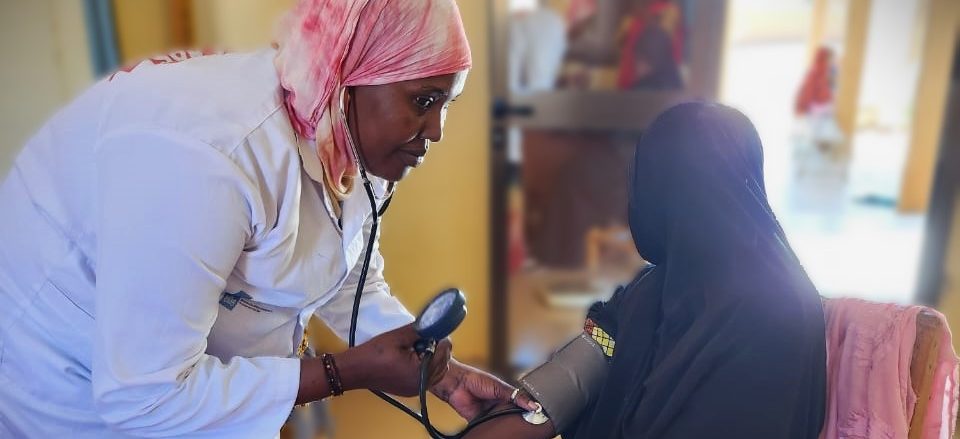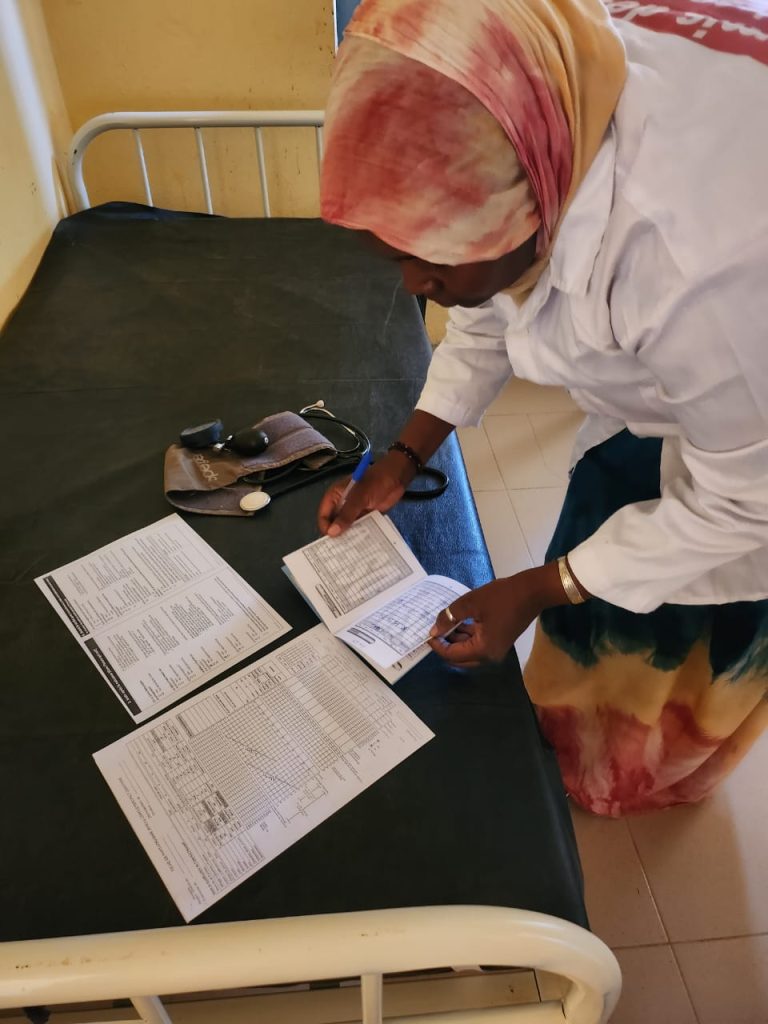A “Life Jacket” for Women and Their Newborns: Safe Childbirth Checklist Training Improves Obstetric Care For At-Risk Patients
Published on December 11, 2023

Photos By Mahamane Alidji, Technical Director, Forgho Community Health Center, Mali
My name is Samaou Abdourhamane and I’ve been an obstetric nurse at the Forgho Community Health Center (known as a CSCom locally) in Mali’s Gao region for six years. The Forgho CSCom is one of 20 health centers in the Gao health district receiving technical and financial support from MOMENTUM Integrated Health Resilience.
I was fortunate enough to be among the health care providers who participated in an important December 2022 Safe Childbirth Checklist training organized by the Gao Health District with MOMENTUM support.
The Safe Childbirth Checklist was developed by the World Health Organization to remind and guide providers in adhering to clinical practices, and specifically for care around the time of birth (labor and delivery, and immediately after birth). It addresses the major causes of maternal death–such as hemorrhage, infection, obstructed labor, and inadequate care during delivery–as well as neonatal death from causes such as asphyxia, infection, and complications related to being born prematurely.
I received an orientation to the Checklist in 2020 through another district partner, but my ability to complete it according to standard practices was strengthened during the more recent training, especially through the MOMENTUM-supported practical mentoring that followed it. Although I understood the tool’s importance for pregnancy’s early risk-factor detection and management, I needed the confidence I gained during that period to be more diligent in its daily use.
From December 2022 to February 2023, I systematically used the Checklist to carry out 60 deliveries at the Forgho CSCom’s maternity hospital. After reviewing the primary materials, including a delivery register, partographs (tools for monitoring the health of women and fetuses during active labor), and other process management mechanisms during the post-training follow-up in February 2023, the supervisory team certified that all the deliveries benefited from the use of the Checklist and that 100 percent of the sheets were completed according to the standards. I was quite proud of that, as the result is healthier mothers and babies.
The Checklist allowed me to take concrete action to care for 10 women in need during labor. Among these were eight patients with protein in the urine, which is not a good sign. Three of these cases led to patient transfers to the district health center, and five were diagnosed as urinary tract infections that were managed within the community health center.

The Checklist has created more diligent monitoring on my part, which admittedly I was not as rigorous with before the training. This includes checking the prenatal consultation diaries for all women who arrive at the maternity ward in labor situations, and routinely checking the availability of essential medicines used during delivery or in the immediate postpartum period.
The most important positive change that the Checklist has made in my daily practice includes the tracking of inventory and the availability of essential drugs that can be used in urgent situations during or just after childbirth. The use of the Checklist has strengthened my confidence to monitor women in labor, but above all it has improved my relationship with them by helping to establish a dialogue between the women, any family members who accompany them during this crucial time, and me.
My message to health care providers working in the fight against maternal and newborn morbidity and mortality is to consider the Checklist as a “life jacket” for women in labor and their newborns. That is, it is important to use at each delivery, and something that helps keep them safe in difficult situations.
I would like the Safe Childbirth Checklist training to be extended to all health districts and regional facilities because it will contribute to the reduction of maternal and newborn deaths within health care establishments. Training health care providers is important because insecurity in our area makes it impossible to guarantee the timely treatment of obstetric and neonatal emergencies that require fast and accurate diagnosis. This makes early risk factor detection crucial to organize any needed referrals and successfully adapt to local realities.
Looking ahead, I am eager to participate in additional training that allows me to accomplish my mission as a healthcare professional: to save lives. I hope that there will be other opportunities to help me realize this vital goal for Mali’s future.
The Gao region is characterized by challenging maternal and newborn health indicators, with a maternal mortality rate of 439 per 100,000 live births, and newborn mortality of 43 per 1,000 live births, according to the 2018 Demographic and Health Survey (EDS VI). These rates are well above the national average, which are 325/100,000 and 35/1,000, respectively. MOMENTUM Integrated Health Resilience supports the Mali Ministry of Health and Social Development to extend the use of the Safe Childbirth Checklist to the country’s northern regions, with a pilot underway in Gao. MOMENTUM also works with the government, stakeholders, and other partners to increase community health resilience and health system readiness in areas where populations do not have ready access to quality health services.

